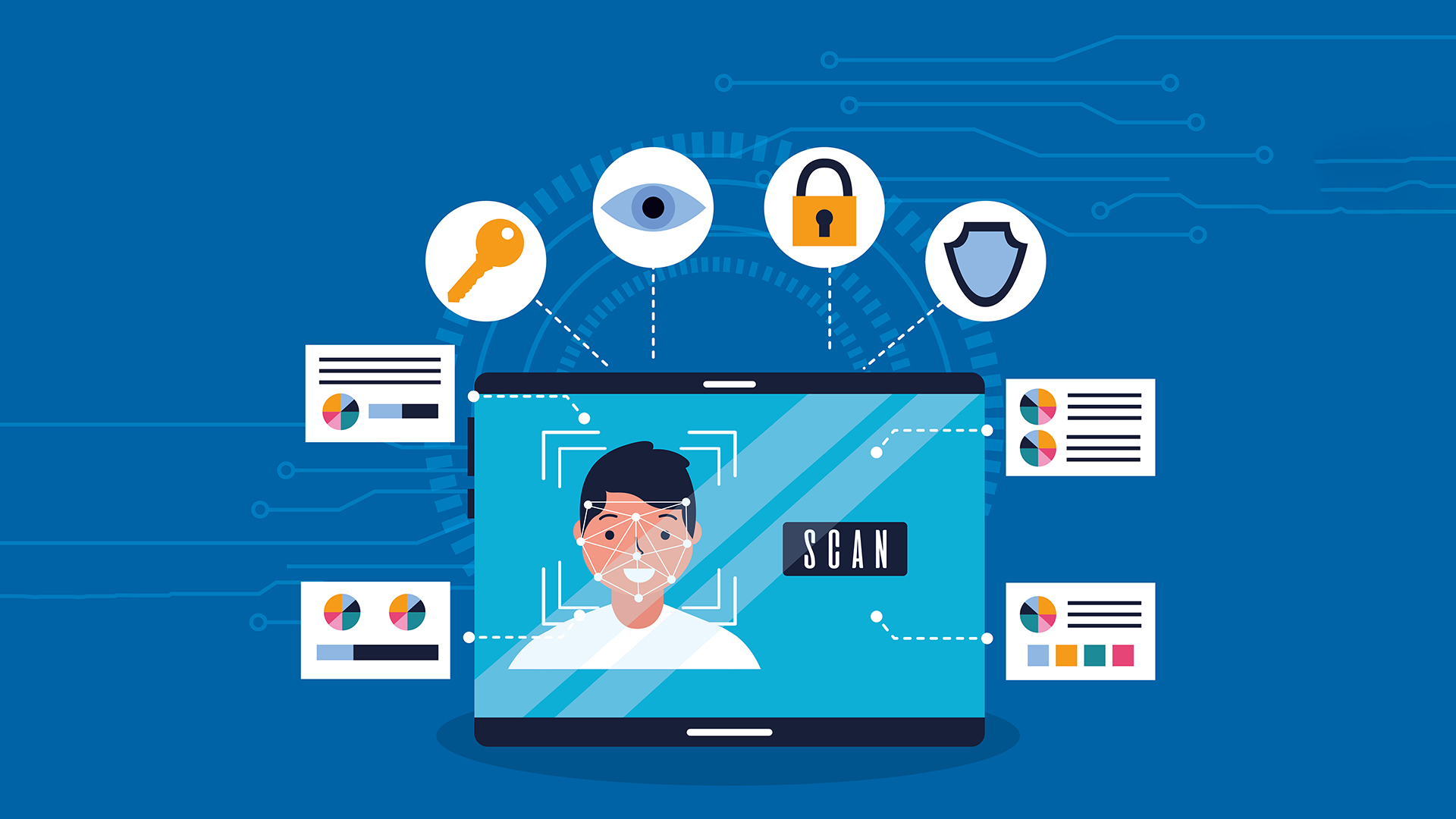
The Bio-Metric Edge: Learn Advanced Cyber Security Techniques
Course overview
Here you will find information on the “Biometrics in Cybersecurity Advanced Certification Course.” The need of maintaining safe and trustworthy authentication systems cannot be overstated in the connected digital world of today. Because passwords and other traditional authentication techniques are becoming more and more susceptible to online dangers, biometric technologies have become a reliable alternative.
This course will immerse you in the field of biometrics and highlight how important it is to improving cybersecurity. You will investigate a variety of biometric modalities, such as voice authentication, iris scanning, and speech recognition, as well as fingerprint and facial identification, to verify user identities.
Participants will develop a thorough understanding of the concepts, tools, and cybersecurity applications of biometrics as we move through this course. You will examine the complexities of biometric system design, discover how to balance security and user experience, and investigate the moral issues related to the collecting and use of biometric data.
In this section, we will look at actual case studies where biometric authentication has been successfully incorporated to protect sensitive information and important systems. You can get understanding into the practical application of biometric solutions across numerous industries, from finance to healthcare, and beyond, by examining these cases.
Introduction
Participants will be exposed to the most recent developments and developing trends in biometric technology throughout the course, including how machine learning and artificial intelligence will affect authentication in the future. You will receive insight into how biometrics might assist in addressing changing cybersecurity challenges in a quickly evolving digital environment.
Participants will graduate from this course with the knowledge and abilities required to successfully develop, implement, and manage biometric authentication systems. You will have the knowledge necessary to make choices that retain a seamless user experience while enhancing security. You will also be knowledgeable about ethical issues, laws governing data protection, and the realistic tactics needed to defend against such weaknesses.
We are The Training Bee, a global training and education firm providing services in many countries. We are specialized in capacity building and talent development solutions for individuals and organizations, with our highly customized programs and training sessions.
So let’s start this informative voyage into the world of cybersecurity and biometrics. Prepare to learn about the cutting-edge technologies that are changing how we authenticate identities and strengthen our digital defenses against a wide range of constantly changing cyberthreats.
Learning Objectives
Upon completing Bio-metric course in cyber security advanced certification course, participants will be able to:
- Describe what biometrics are and how they affect cybersecurity.
- Recognize the restrictions of conventional authentication techniques.
- Find out about the benefits and drawbacks of utilizing biometrics for authentication.
- Describe how to sign up for a biometric system.
- Recognize template matching as it relates to biometric authentication.
- Investigate strategies for balancing the false acceptance rate (FAR) and false rejection rate (FRR).
- Describe the procedures for creating a safe biometric system.
Our Unique Training Methodology
This interactive course comprises the following training methods:
- Journaling – This consists of setting a timer and letting your thoughts flow, unedited and unscripted recording events, ideas, and thoughts over a while, related to the topic.
- Social learning – Information and expertise exchanged amongst peers via computer-based technologies and interactive conversations including Blogging, instant messaging, and forums for debate in groups.
- Project-based learning
- Mind mapping and brainstorming – A session will be carried out between participants to uncover unique ideas, thoughts, and opinions having a quality discussion.
- Interactive sessions – The course will use informative lectures to introduce key concepts and theories related to the topic.
- Presentations – Participants will be presented with multimedia tools such as videos and graphics to enhance learning. These will be delivered engagingly and interactively.
Training Medium
This Bio-metric course in cyber security advanced certification course training is designed in a way that it can be delivered face-to-face and virtually.
Course Duration
This training is versatile in its delivery. The training can be delivered as a full-fledged 40-hour training program or a 15- hours crash course covering 5 hours of content each day over 3 days
Pre-course Assessment
Before you enroll in this course all we wanted to know is your exact mindset and your way of thinking.
For that, we have designed this questionnaire attached below.
- Describe what biometrics are and how they are used in cyber security.
- Give a brief description of the uses of two different biometric modalities.
- What are the primary obstacles to collecting reliable biometric data?
- Why is the security of biometric templates important? Give a succinct justification.
- How might cancellable biometrics help with biometric system privacy concerns?
- In the context of biometric security, explain the idea of continuous monitoring.
- Give the names of two security techniques that can be used to safeguard biometric data while it is being stored and transmitted.
- Give an example of a new biometric technology and explain briefly how it might be used.
- How might cybersecurity be improved by combining biometrics and AI?
Course Modules
This Bio-metric course in cyber security advanced certification course covers the following topics for understanding the essentials of the Agile Workplace:
Module 1 – Biometrics and Cybersecurity Overview
- Using biometrics for cybersecurity
- The development and significance of biometric systems
- Authentication using biometrics versus conventional techniques
- Legal and moral issues with biometrics
Module 2 – Biometric Tools and Techniques
- Overview of the many biometric modalities (voice, iris, face, fingerprint, etc.)
- Strengths and flaws of various biometric methods
- A multimodal biometric approach and its benefits
- Biometric hybrid systems
Module 3 – Acquisition and Preprocessing of Biometric Data
- Methods for collecting biometric data (cameras, gadgets, and sensors)
- Data acquisition issues (quality, noise, fluctuations)
- Preprocessing methods (noise reduction, image enhancement)
- Biometric feature extraction and representation
Module 4 – Algorithms for Biometric Recognition
- Categorization and pattern recognition
- Statistical techniques for feature reduction (PCA, LDA)
- Comparing techniques (neural networks, similarity metrics)
- Metrics of performance and ROC analysis
Module 5 – Privacy and Protection for Biometric Templates
- Protection of templates is crucial
- Protection strategies for templates (hashing, encryption, and revocable biometrics)
- Privacy issues and the leaking of biometric data
- GDPR and the use of biometric data legally
Module 6 – Spoofing and Presentation Attacks Using Biometrics
- Detecting spoofing attacks and weaknesses
- Presentation attack types (repeat attacks, print attacks)
- Techniques for detecting liveness (physiological signs, motion analysis)
- Ways to defend against spoofing attacks
Module 7 – Security of Biometric Systems
- Biometric system threat modelling and risk assessment
- Biometric databases and templates’ security
- Secure biometric data transmission and storage
- Anomaly detection and ongoing observation
Module 8 – Applications of Biometrics in Cybersecurity
- In both physical and digital domains, biometric access control
- Mobile devices and biometrics in financial transactions
- Identity management and forensics use of biometrics
- Case studies of biometric adoption that was effective
Module 9 – Biometrics’ Ethical and Social Aspects
- Ethics in the gathering and use of biometric data
- Biases and social effects in biometric systems
- Fairness and inclusivity in biometric technologies
- Public opinion of biometric systems and its acceptability
Module 10 – Future Biometrics Trends and Innovations
- Behavioural biometrics has advanced (keystroke dynamics, gait analysis).
- New biometric technologies (earprints, vein patterns)
- Blockchain, AI, and biometrics integration
- Biometric cybersecurity issues and prospects for research
Module 11 – Integrated Biometrics
- Combining various biometric methods
- Score-level, feature-level, and decision-level fusion approaches
- The advantages and difficulties of multimodal biometrics
Module 12 – Practical activities and hands-on labs
- Putting biometric recognition algorithms into practise
- Testing out biometric tools and databases
- Carrying out spoofing assaults and testing spoof-deterrent methods
- Constructing a straightforward biometric authentication scheme
Post-course Assessment
Participants need to complete an assessment post-course completion so our mentors will get to know their understanding of the course. A mentor will also have interrogative conversations with participants and provide valuable feedback.
- Describe what biometrics are and how they are used in cybersecurity.
- Compare and contrast the benefits and drawbacks of employing biometrics for authentication against more conventional techniques.
- Describe the idea of multi-factor authentication and the integration of biometrics into it.
- Describe the steps involved in signing up for a biometric system. What elements need to be taken into account at this point?
- Describe the biometric system notion of template matching. What are its limitations and how does it operate?
- Examine the biometric systems’ possible weaknesses, including presentation attacks and replay attacks. How might businesses lessen these risks?
- Describe the idea of biometric fusion and how it helps to increase the biometric systems’ overall accuracy and security.
Lessons Learned
The Use of Biometrics as a Strong Authentication Tool Biometric authentication offers a reliable and practical way to confirm users’ identities. Participants have discovered that biometrics make use of particular physiological or behavioural traits, making them more difficult to copy or spoof than conventional password-based techniques.
Enhancement of multifactor authentication: The course focused on how biometric authentication can be included in MFA schemes, increasing security by demanding several forms of verification. The risk of unauthorised access is decreased by this stacking of security measures.
Diverse Biometric Modalities: Participants have learned about a variety of biometric modalities, including voice recognition, iris scanning, facial recognition, fingerprints, and more. They have discovered that the selection of a modality is influenced by variables such as security needs, user convenience, and prospective use cases.







